KHM Rundgang 2024 | © Dörthe Boxberg
In the early days of AI image generators, the supposedly incorrect representation of the hand served as an identifier of a generated image. The image of the Pope in a large white down jacket, for example, could be identified as „fake“ by the deformed-looking hand. Similar images are circulating online that are supposed to show Trump‘s arrest or Putin kneeling, and right-wing groups (such as the AFD) are also increasingly using AI-generated images for their campaigns. What these images have in common is that people‘s hands look deformed and often have six or more fingers. In her essay “Midjourney can‘t count”, Prof. Amanda Wasielewski describes this phenomenon, which is widely discussed in internet forums, as: “hands problem”.
In the meantime, many of the newer models such as DALL-E and MIDJOURNEY are able to better represent hands. Some even no longer allow any deviations and stipulate that a hand must always have five fingers.
“The Hands Problem” marks a specific historical moment in the highly accelerated technological development of AI diffusion models. We are interested in the question of how the stages of the progressive optimization of generative artificial intelligence can be documented and archived in images.
The latest models of image generators are usually outdated after just a few weeks. A circumstance that strongly influences our way of working and to which we have to adapt. For this reason we see our approach as an archaeological one. We try to take the found objects, which after just a few months seem like relics from another time, out of the immaterial space and bring them into a tangible form.
In the course of our work, we used text-to-image AI to generate photorealistic images of hands. A third dimension was added to these images using 3D software on the computer. The resulting virtual relief (3D-mesh) was then used in a CNC process to mill a mold in which the final concrete works were cast and given their final materiality and appearance.
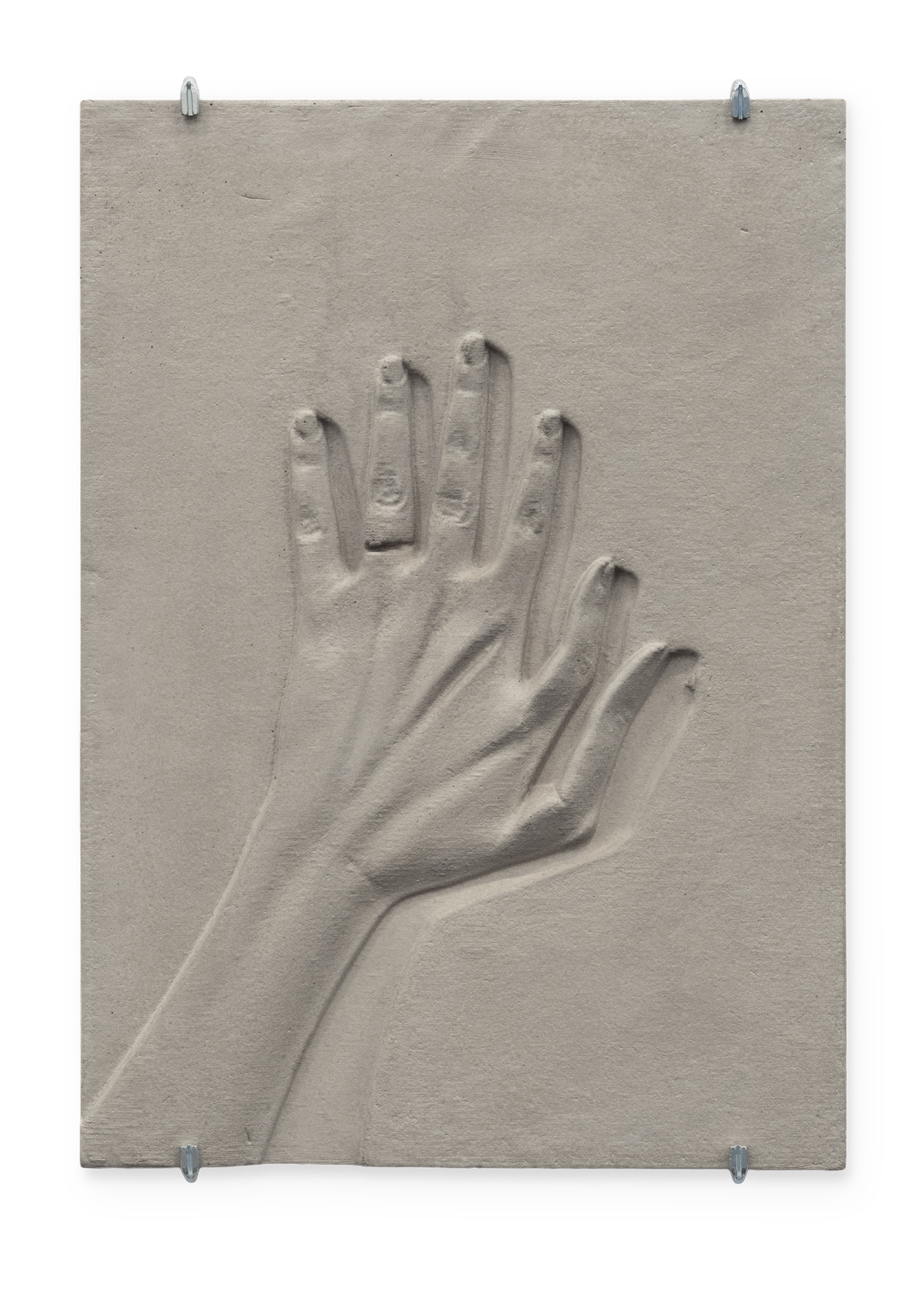
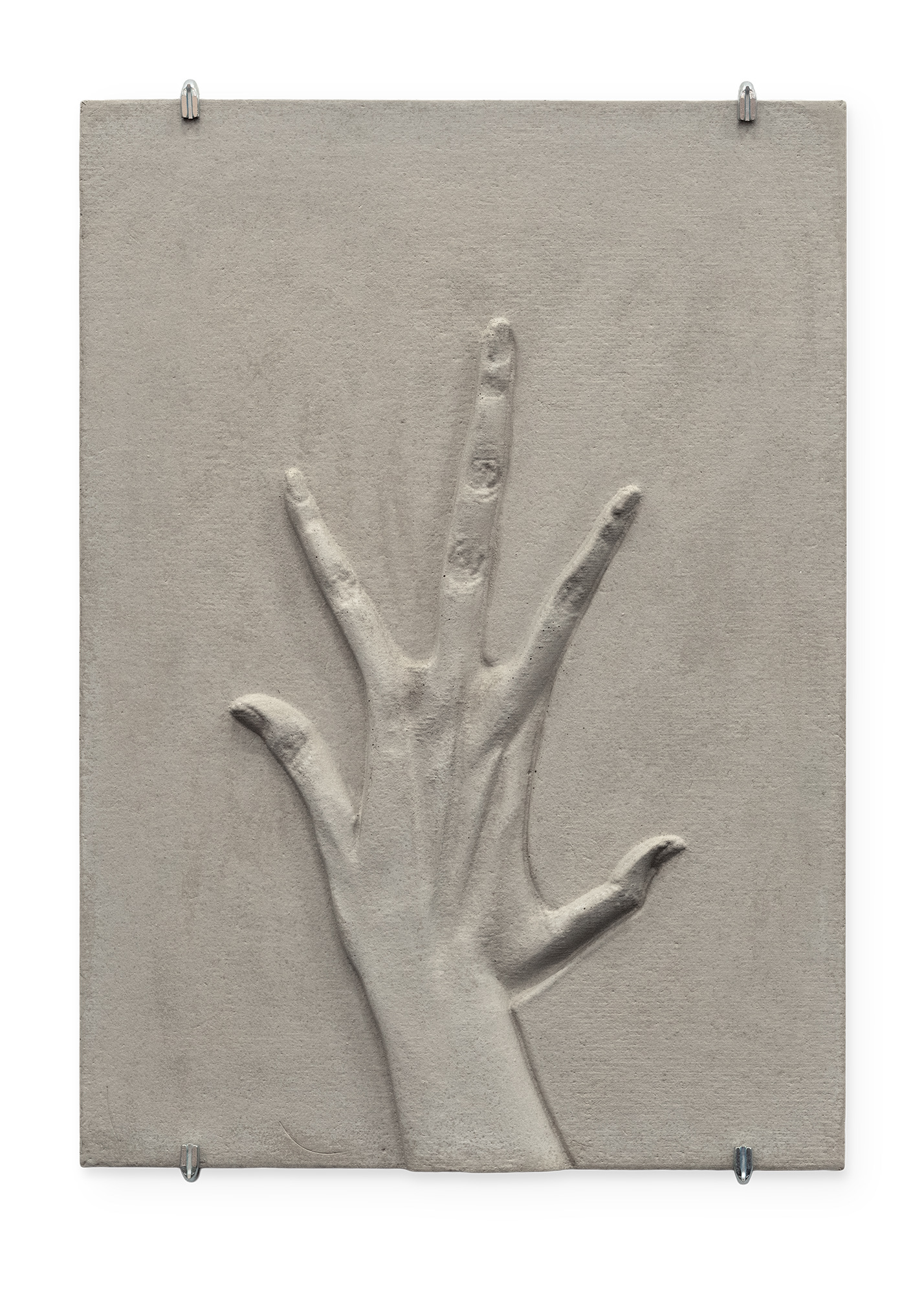
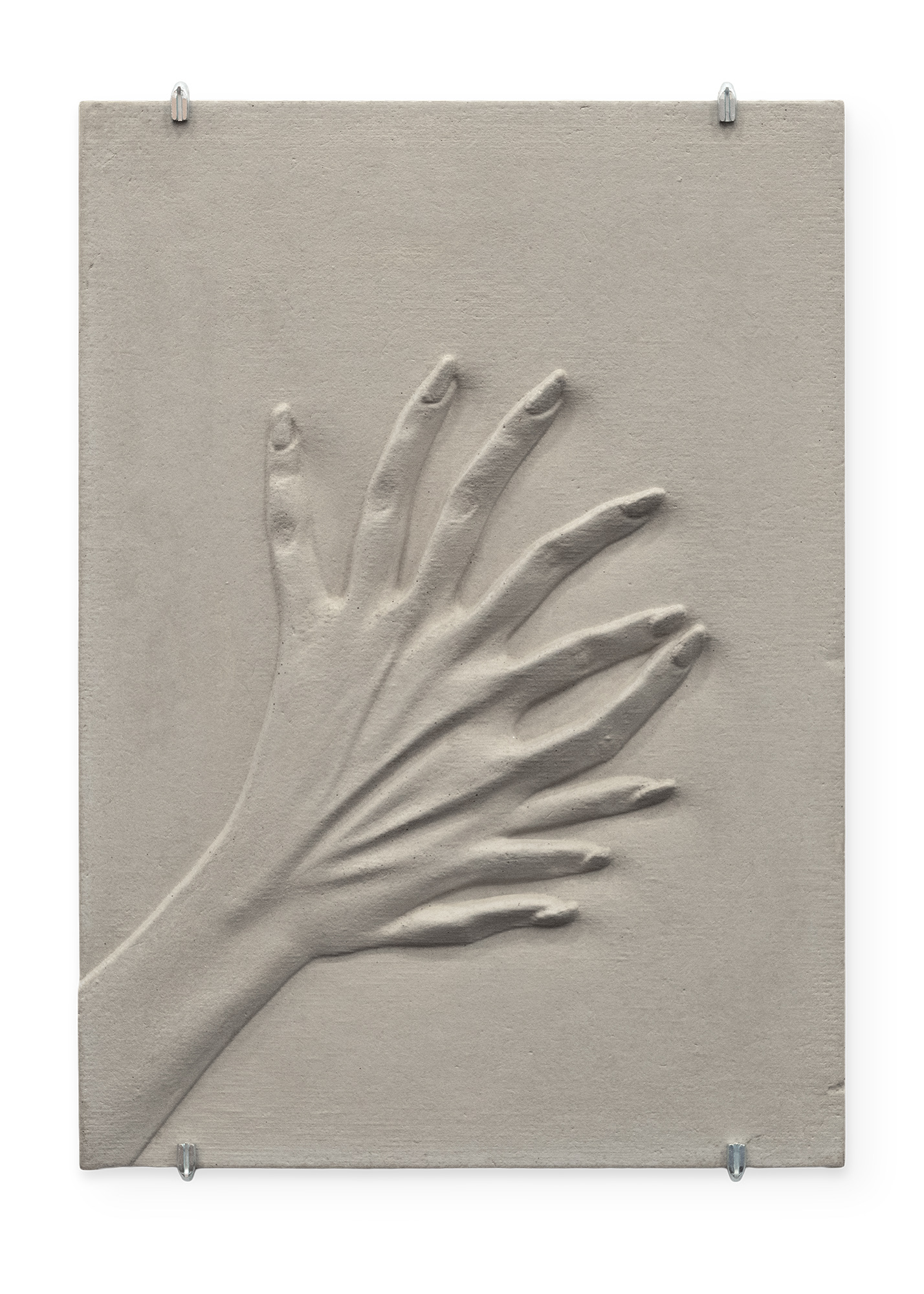
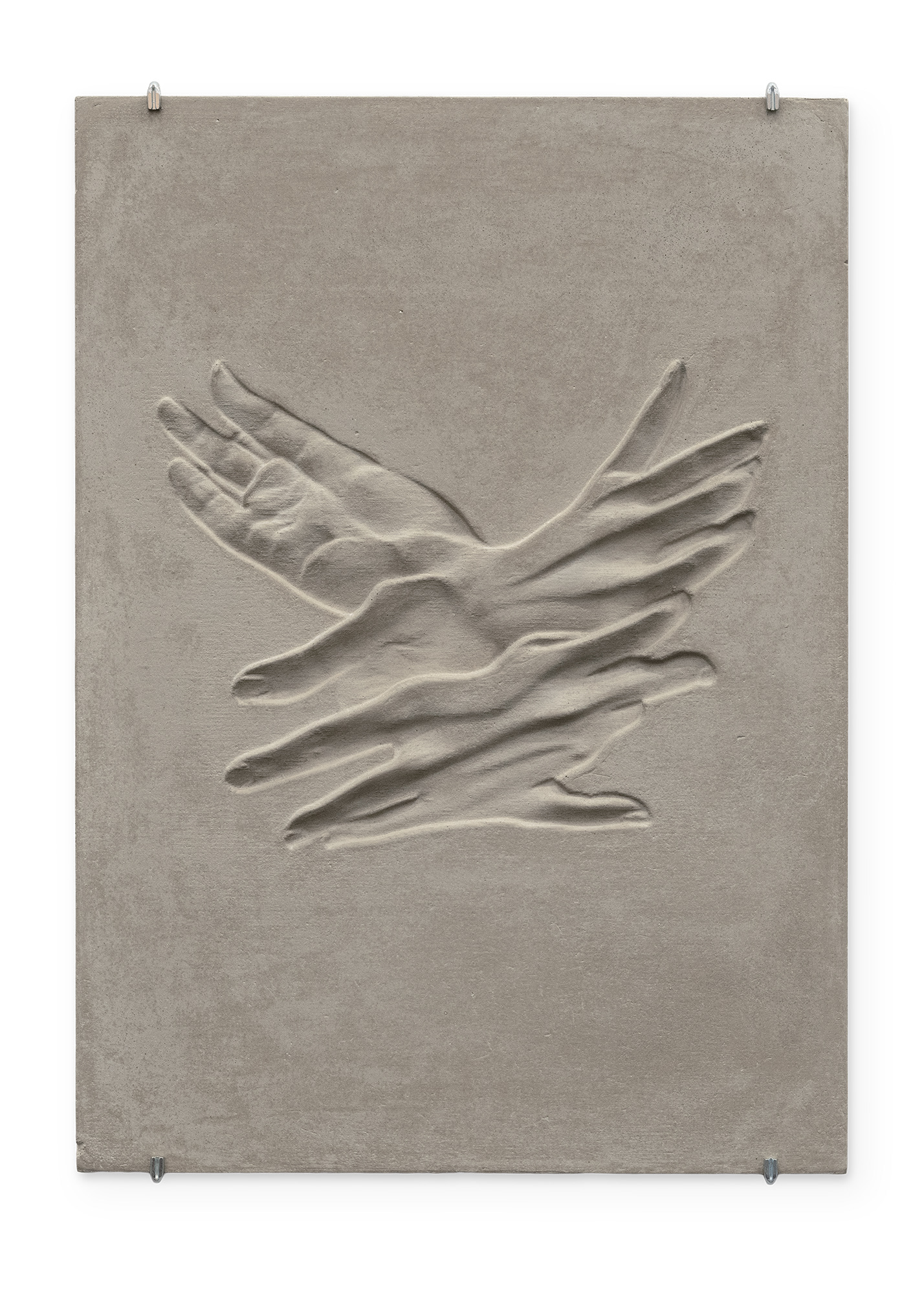
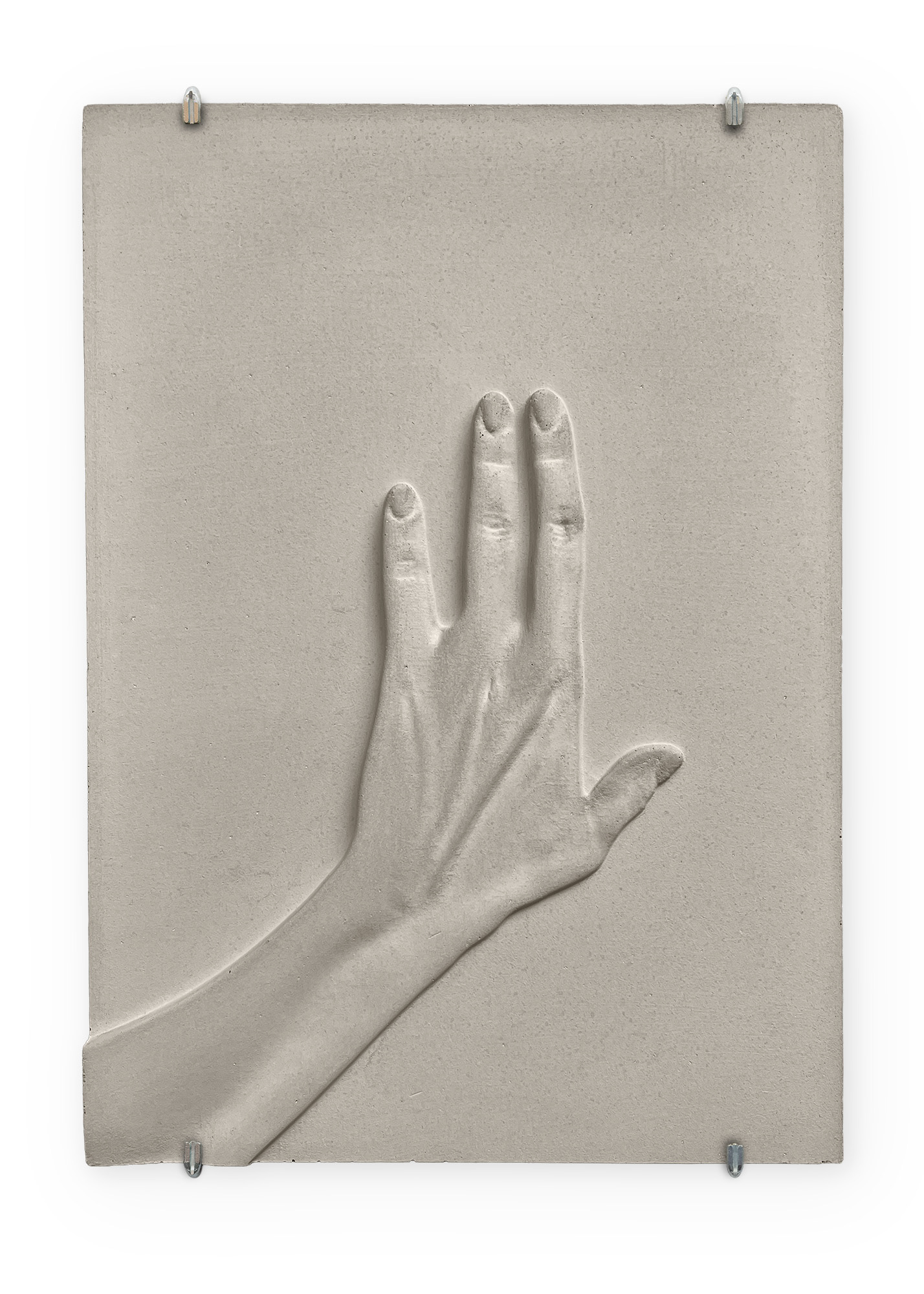
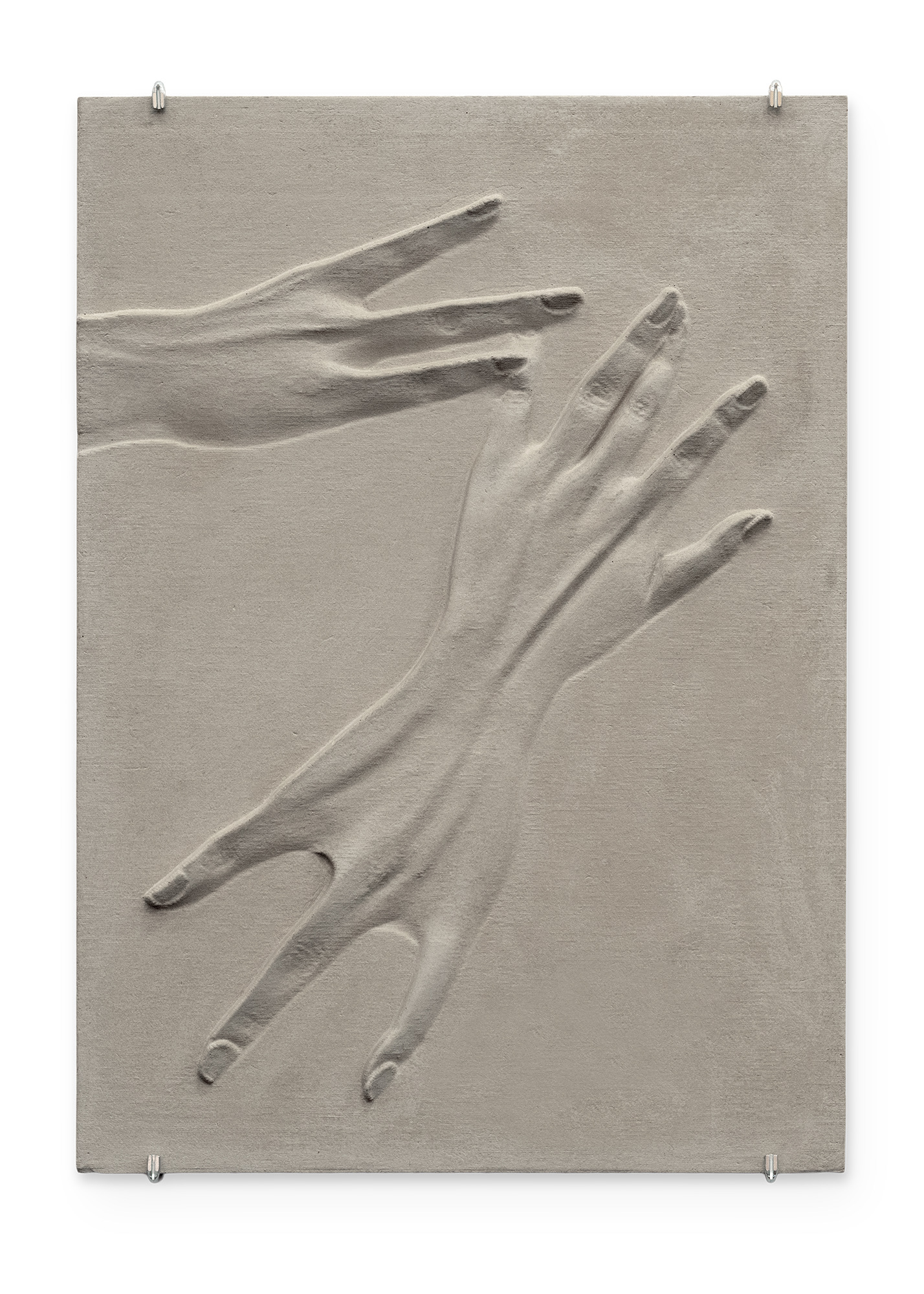
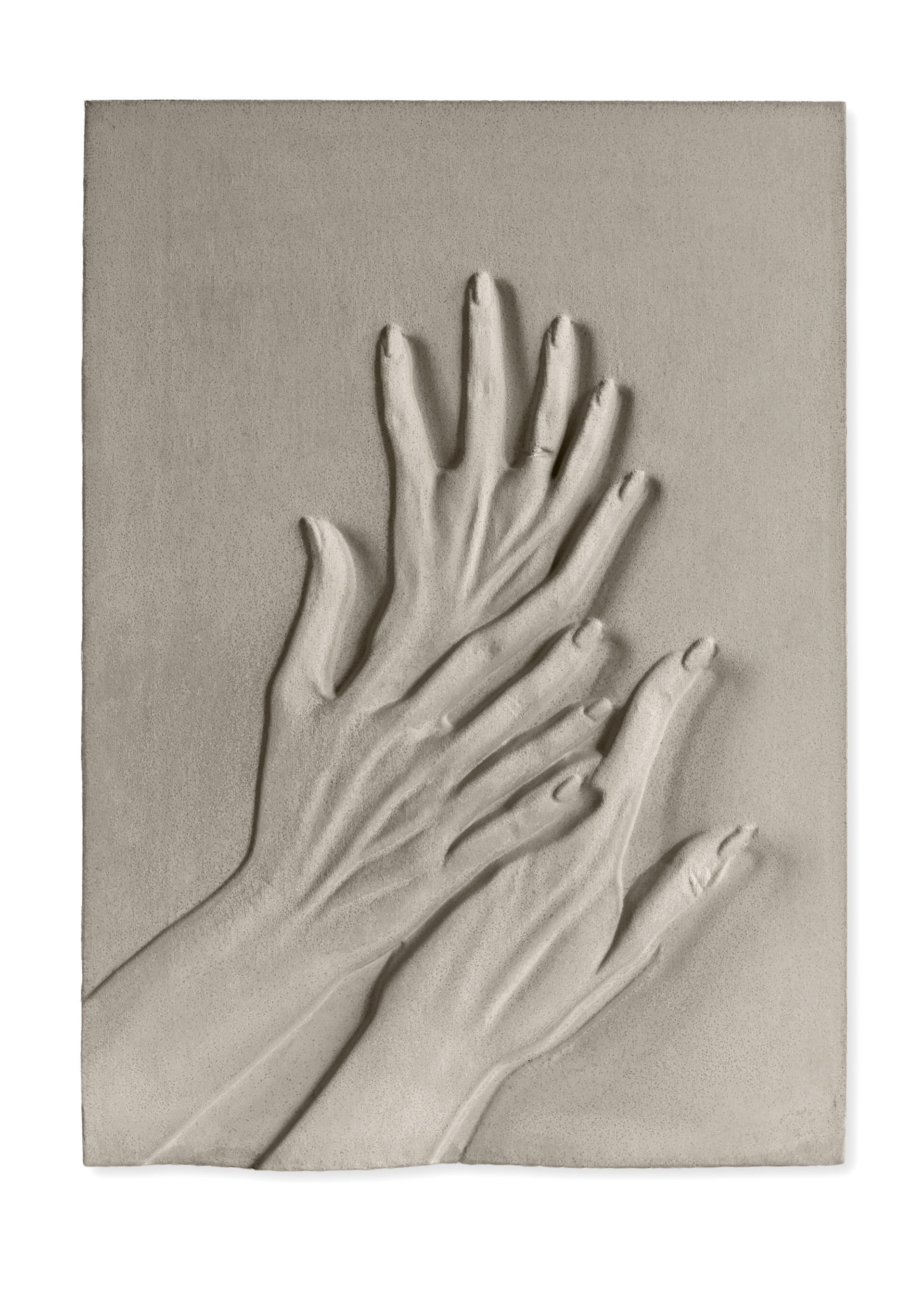
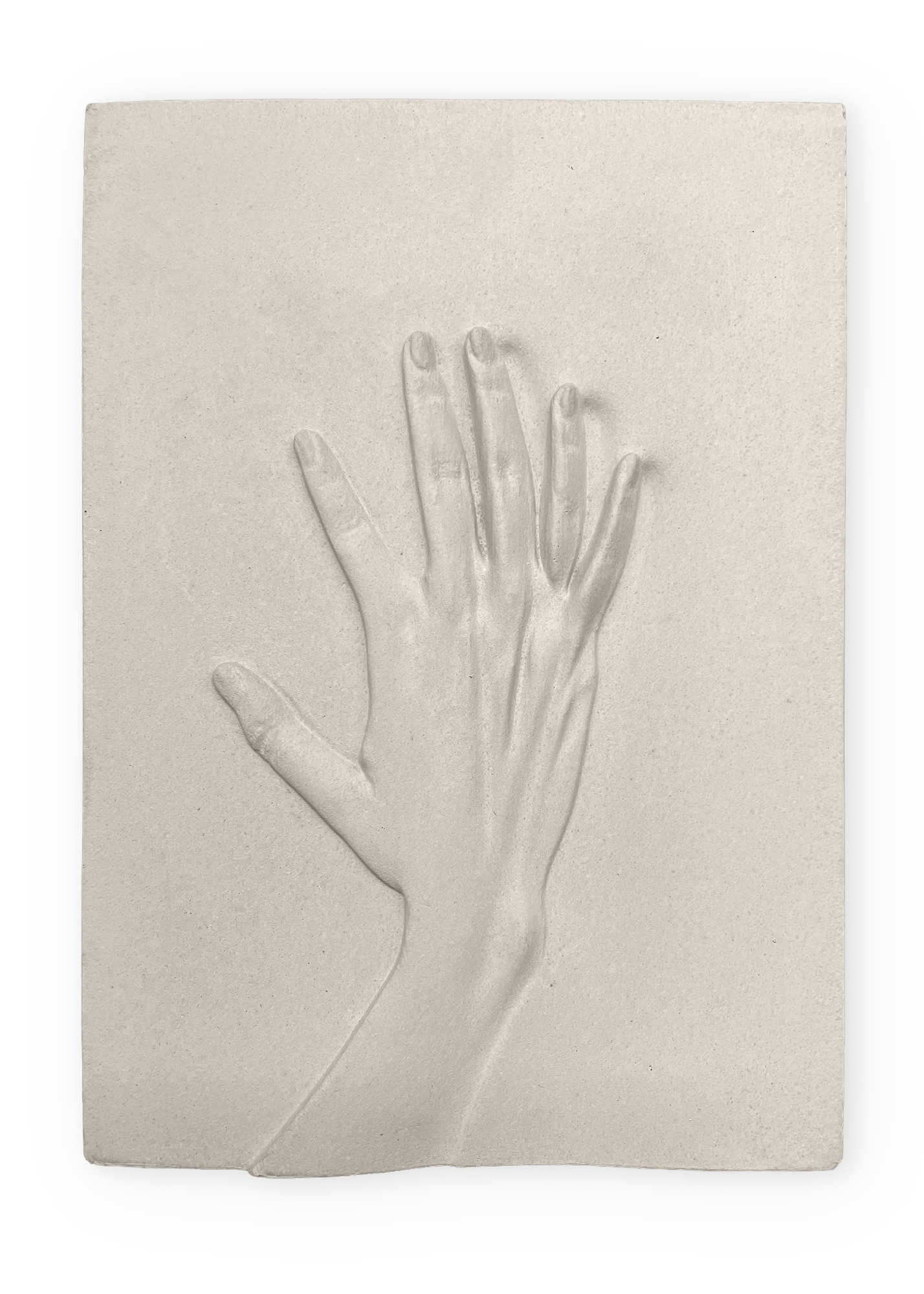
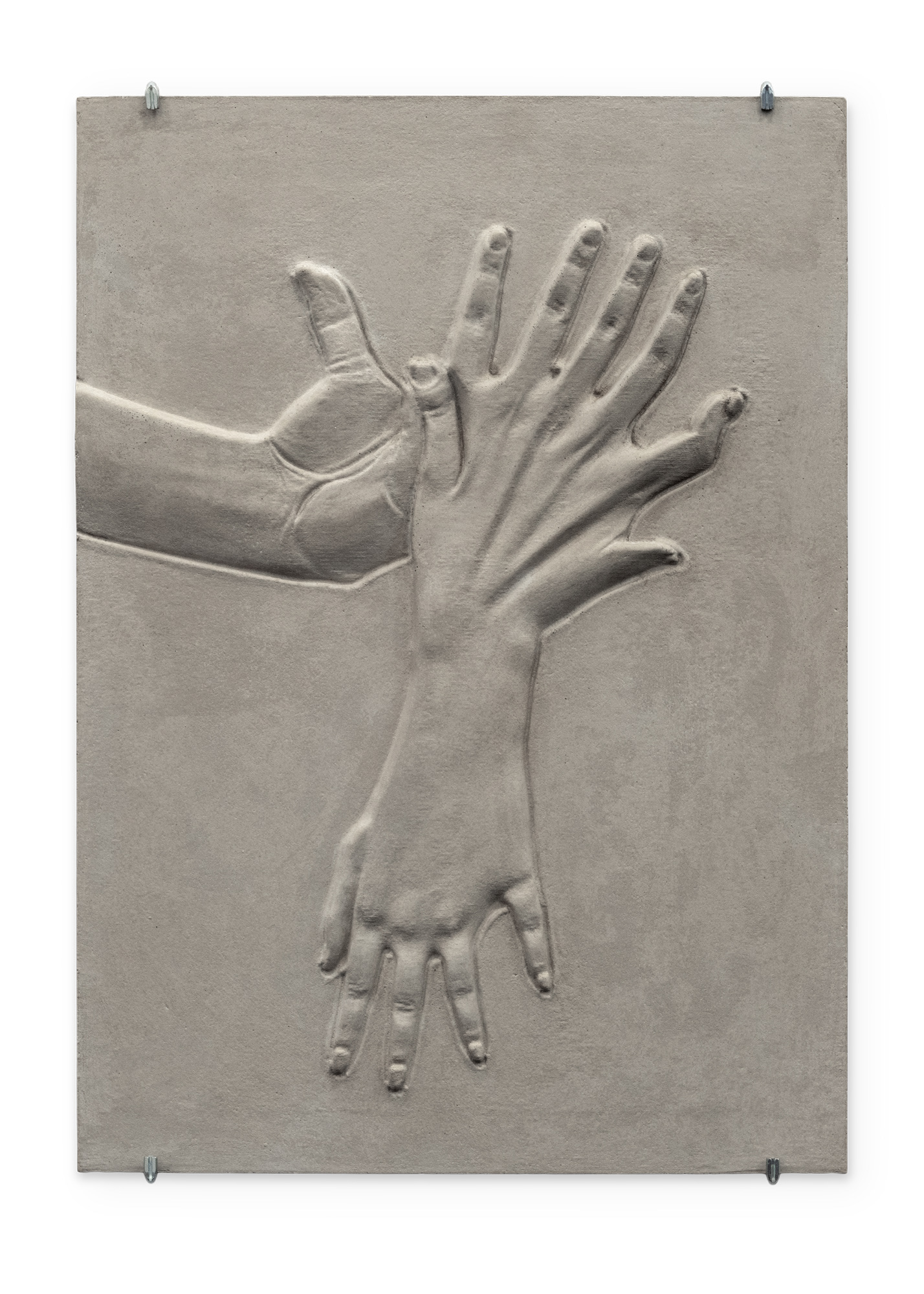
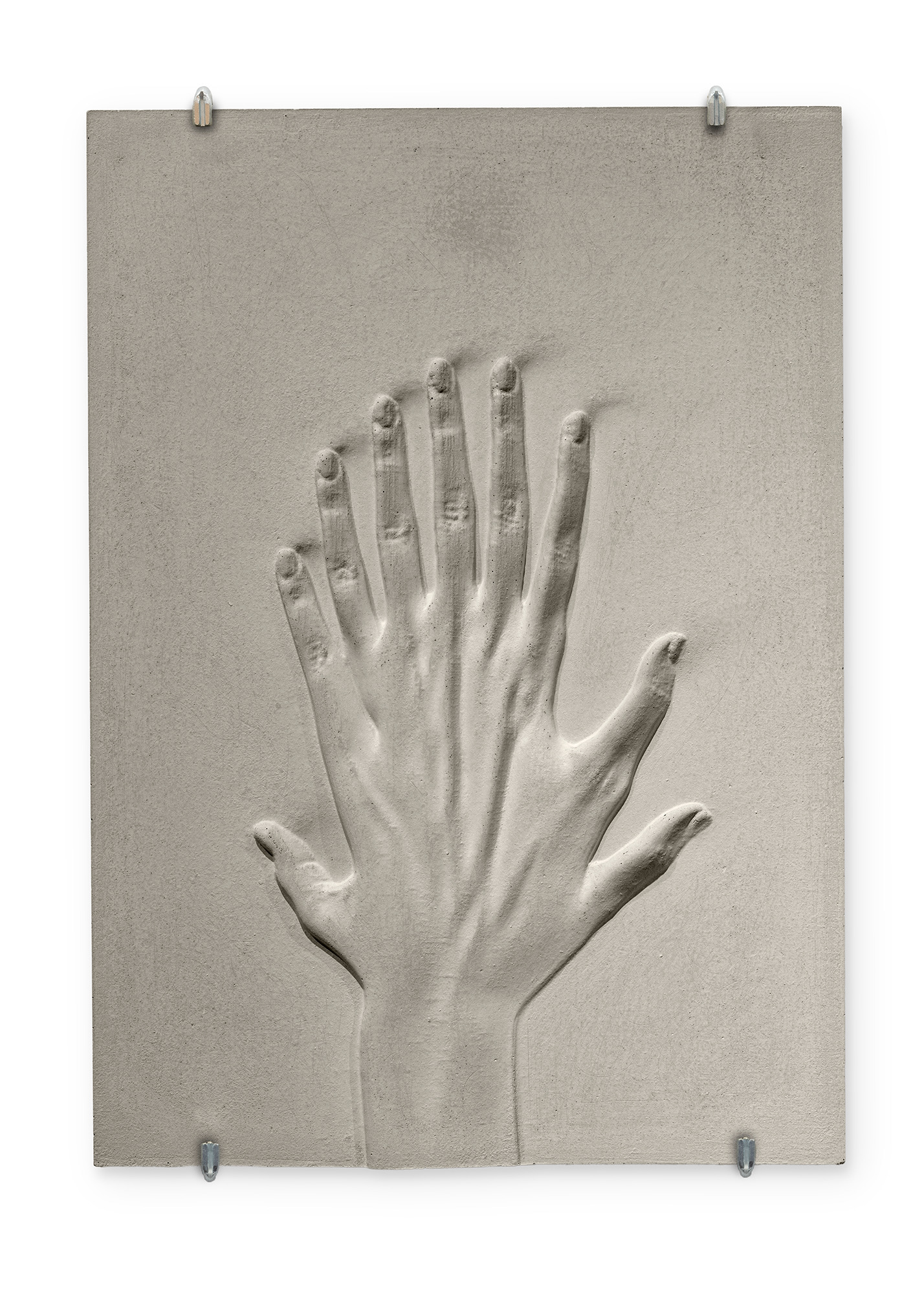
Bugs & Metamorphosis : Glitching Photography., Photo: © Cecilia Sandblom, Hasselblad Foundation, 2025, fHasselblad Center, Gothenburg, Sweden, Curators: Louise Wolthers and Nina Mangalanayagam
Bugs & Metamorphosis, Kunsthal Aarhus, 2025, Photo: Jacob Friis-Holm Nielsen